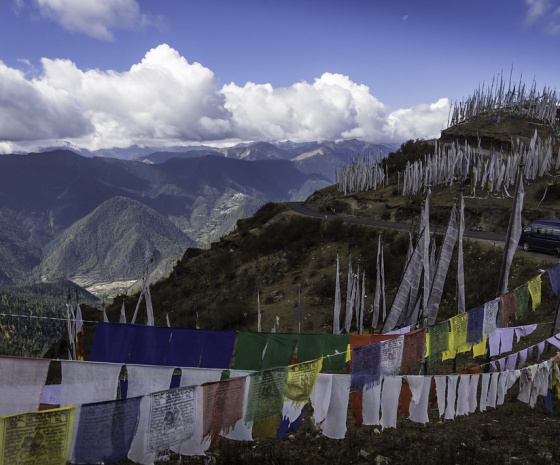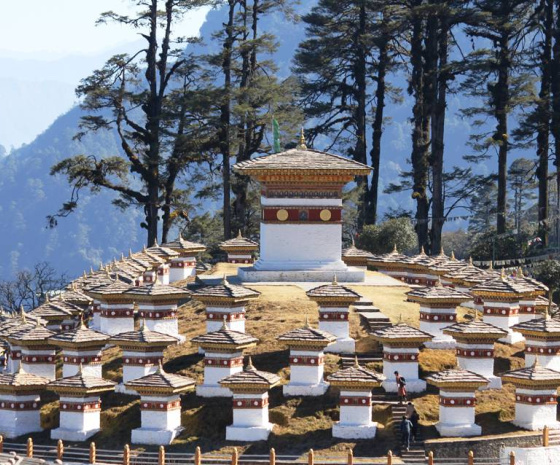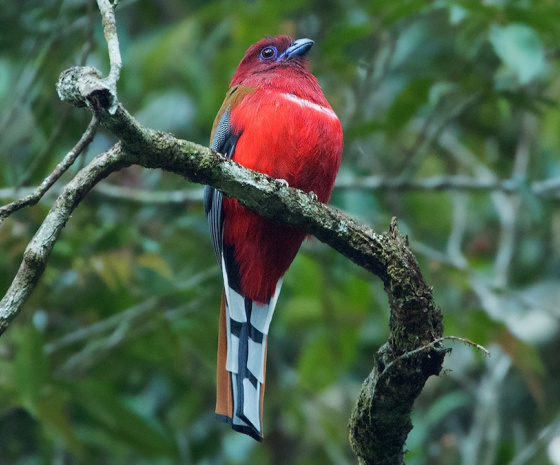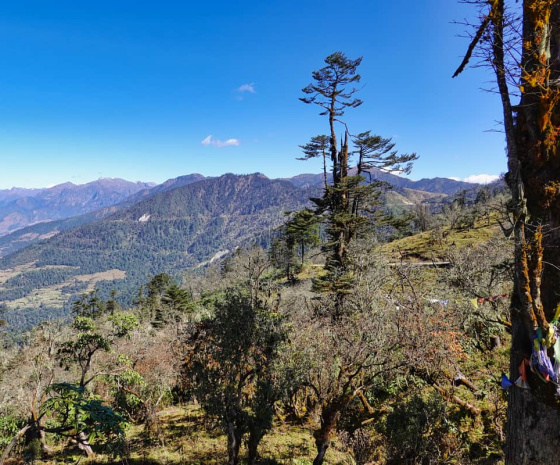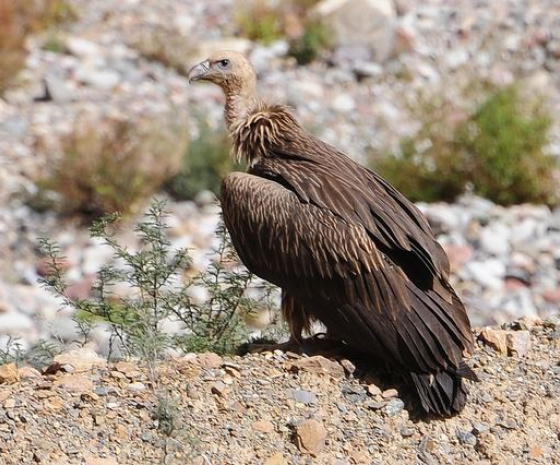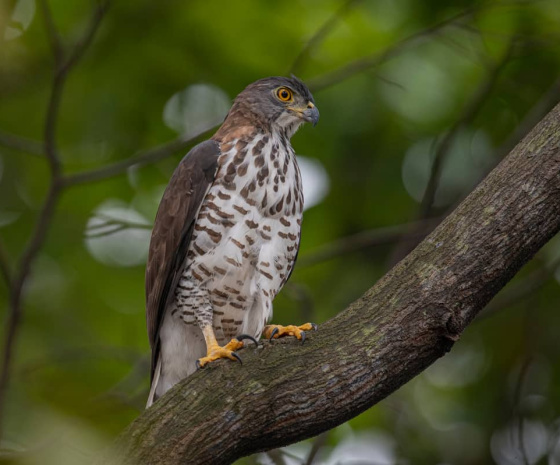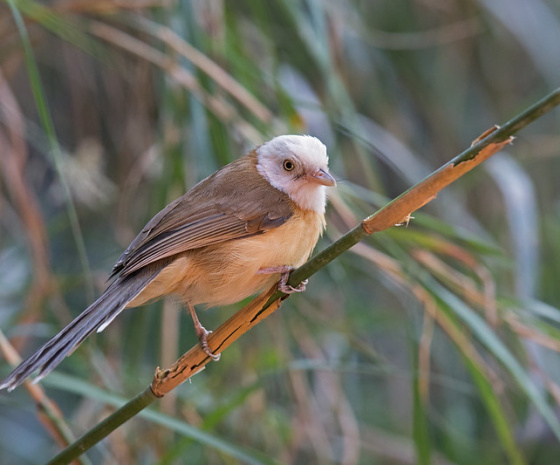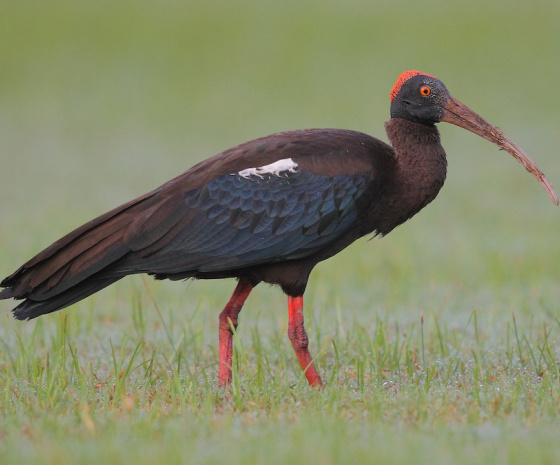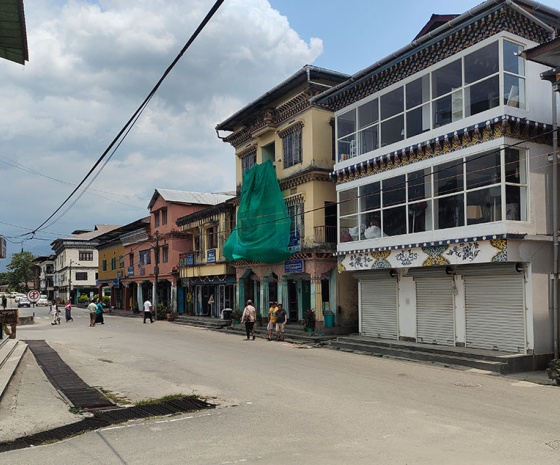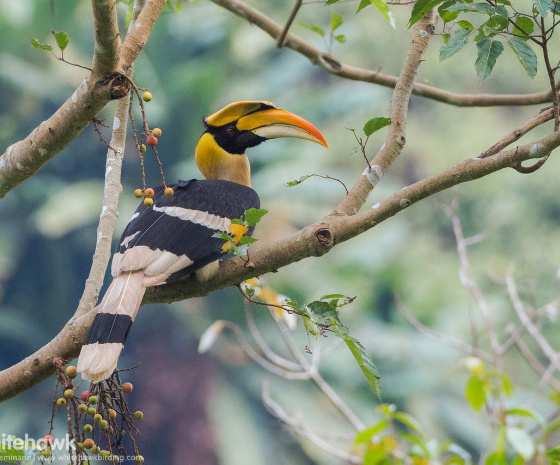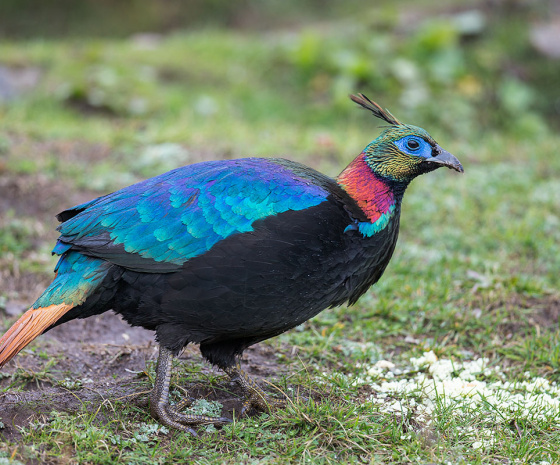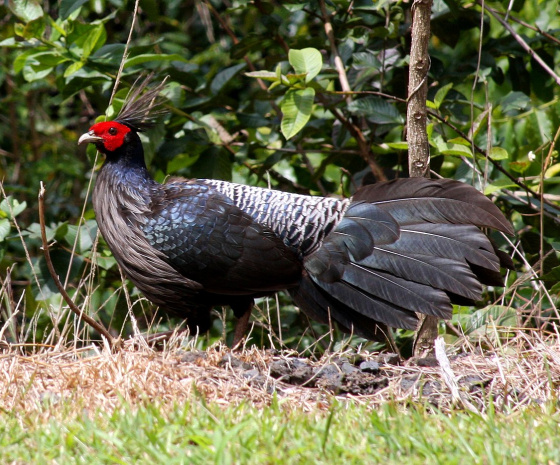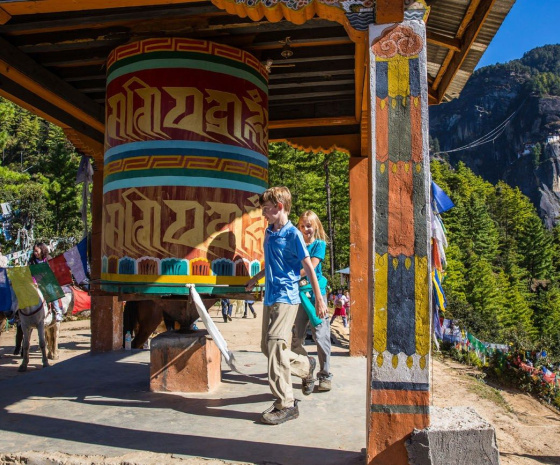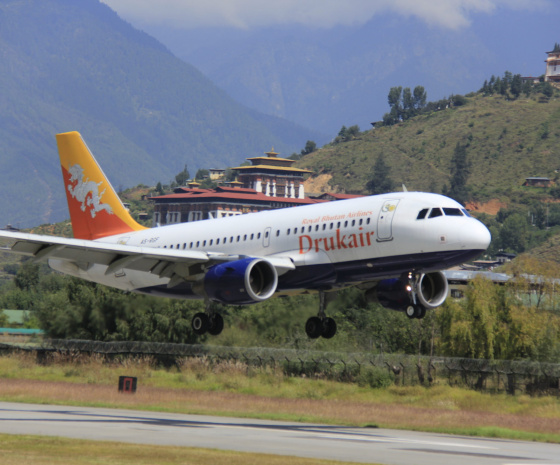Royal Manas National Park: Bhutan bird photography
Beyond wildlife, discover Bhutan's cultural treasures with visits to ancient dzongs and the iconic Tigers Nest Monastery, all while interacting with the warm Bhutanese people. This spring birding tour offers a unique blend of natural wonders and cultural immersion, ensuring a deeply enriching experience that respects Bhutan's sacred ethos and pristine environments.
Highlights
-
11 N / 12 D
-
All around the year
-
Off beaten track / Bird Photography
Outline Itinerary
-
Day 1 Fly to Paro
-
Day 2 Birdwatching in Chele Pass and Journey to Thimphu
-
Day 3 Bird watching at Dochu La, Lampelri Botanical Park and Punakha.
-
Day 4 Punakha to Phobjikha over Lawa La (pass), 85 km
-
Day 5 Phobjikha to Trongsa over Pele La (3,350m), 85 km.
-
Day 6 Trongsa to Tingtibi, 140 km, birding along the Zhemgang road
-
Day 7 Explore the Royal Manas National Park for birds and mammals.
-
Day 8 Tingtibi to Gelephu, 140 km, birding the areas of Tama La and Surey valleys
-
Day 9 Explore the bird rich tropical forest of Gelephu.
-
Day 10 Fly to Paro, (25 mins). Birding and cultural visits in Paro valley
-
Day 11 Hike to Tiger's Nest
-
Day 12 Depart Paro
Includes
N/A
Excludes
N/A
Detail Itinerary
The tour begins with an exciting flight to Paro from Kathmandu, Delhi, Kolkata, or Bangkok, offering stunning views of the majestic Himalayas. Upon arrival and clearing customs, your guide will greet you. Our first birding spot is along the Pa Chhu river, where we'll search for elusive Himalayan riverine species like the Ibisbill, blending into the glacial stones as it hunts in the snowmelt. Expect to also spot the Brown Dipper, Common Snipe, and various sandpipers among others. Keep an eye out for the Common Hoopoe, Himalayan Buzzard, and other fascinating birds like the Grey-backed Shrike and Russet Sparrow.
We start early today, heading up through ancient forests towards Chele La pass at 3,780m—the highest point of our tour. Along the way, we hope to spot the elusive Grey Nightjar. Upon reaching the pass, be prepared for awe-inspiring vistas of the towering Himalayan peaks like Jhomolhari (7,219m) and sweeping views of Paro and Ha valleys below.
Chele La offers a unique chance to explore alpine meadows and dwarf rhododendron scrub, where Bhutan’s special high-altitude birds thrive. Keep an eye out for Himalayan Monal, Blood and Kalij Pheasants, and a variety of colorful tits, warblers, thrushes, and finches among others. After a hearty breakfast amidst this natural splendor, we'll continue our birdwatching adventure at Chele La before slowly making our way back to Paro. From there, our journey continues eastward, winding towards Thimphu city, ensuring we capture every moment of Bhutan’s avian wonders and breathtaking landscapes.
Today, we're setting out early to catch the majestic Himalayas as dawn breaks over Dochu La at 3,150m. It’s an incredible scene: prayer flags dance in the breeze beside 108 white chortens, marking a historic moment when the fourth king returned safely from potential invasion. This pass is truly unique, offering unparalleled views of snow-capped peaks on clear days.
In these high-altitude forests, a diverse array of birds and flowering plants thrive. Keep an eye out for stunning species like Hodgson’s Hawk Cuckoo, Darjeeling Woodpecker, and the vibrant Fire-tailed Myzornis—one of Bhutan’s avian treasures. As we continue to Lampelri, we'll explore the Royal Botanical Park, where potential sightings include the elusive Ward’s Trogon, Rufous-bellied Woodpecker, and the colorful Blue-fronted Redstart.
Back at our Punakha hotel, expect encounters with birds like the Slender-billed Oriole and Scaly-breasted Munia during the day, and with luck, we might spy the secretive Collared Scops Owl as night falls. Bhutan's natural wonders promise a day filled with discovery and wonder.
Tomorrow morning, we'll explore the Puna Tshang Chhu valley in search of various water birds. Among them are the majestic Pallas’s Fish Eagle, a rare and endangered species, along with Ospreys, Bar-headed Geese, and Ruddy Shelducks, which flock here in winter. We'll also keep an eye out for Gadwalls, Eurasian Wigeons, Mallards, and other fascinating species like the Indian Spot-billed Duck and Northern Shoveler, all rarely spotted in these parts.
As we travel from Punakha up the winding mountain road towards Lawa La at 3,350m, passing through oak and rhododendron forests, we'll seek out notable birds such as Ward’s Trogon, Long-billed Thrush, and the chunky Spot-winged Grosbeak. Descending into the picturesque Phobjikha valley, we'll visit Gangtey, home to Bhutan's largest Nyingmapa monastery. Phobjikha, renowned for its beauty, is also a haven for the rare Black-necked Crane during winter, driven here from the Tibetan plateau. Within this serene valley, we'll look for specialties like the Oriental Skylark, Red-billed Chough, and the impressive Lammergeier, making it a birdwatcher’s paradise.
Early in the morning, we set off towards the eastern reaches, eager to explore the towering boreal forests of Pele La at 3,350m. Our quest? To seek out a variety of avian treasures: from the majestic Himalayan Vulture, often seen in groups soaring high above Pele La, to the elusive Solitary Snipe that hides in the roadside marshes. Along the way, we hope to encounter the melodious Lesser Cuckoo, the striking Black-faced Laughingthrush, and the secretive Hume’s Bush Warbler nestled among bamboo thickets. Other highlights on our birding itinerary include the vibrant Rufous-vented Yuhina, the dainty Short-billed Minivet, and the charming Eurasian Tree Sparrow.
Continuing through enchanting rhododendron forests, we reach Chendibji village, where a picturesque Nepalese-style Chorten stands beside a serene river. Our journey then leads us through Tangsibji village, where we pause by a gentle stream in search of the elusive Black-tailed Crake. Finally, as the day draws to a close, we arrive in Trongsa for a well-deserved overnight stay.
Today, we journey along a serene forest road towards Tingtibi, where Blue Whistling Thrushes take flight as we pass. We eagerly scan mossy waterfalls for the elusive Spotted Forktail. The landscape, ranging from 2000m to 700m, offers a spectacular backdrop for spotting rare birds amidst mixed broad-leafed forests. Here, the endangered Golden Langurs roam in small groups along the roadside.
In the early morning, we seek out a diverse array of bird species such as the majestic Mountain Hawk Eagle, Crested Goshawk, and the colorful Red-headed Trogon. Among the trees, we listen for the distinctive calls of the Great Barbet and spot the tiny Speckled Piculet. Our list also includes the vibrant Crimson Sunbird and the striking Daurian Redstart, a rare visitor in these parts. As we descend into the warmer sub-tropical zone near Tingtibi, we anticipate sightings of the Crested Kingfisher and flocks of Greater Necklaced Laughingthrushes by the Mangde river. Each turn promises new discoveries in this rich avian haven.
After a refreshing tea or coffee at our hotel, we'll embark on a scenic drive along the Tingtibi – Gomphu road, exploring lush bamboo forests in search of some of Bhutan's most fascinating birds. Keep your eyes peeled for the majestic Tawny Fish Owl, known to roost in Tingtibi, along with the elusive Collared Owlet and colorful Red Junglefowl. Our birdwatching adventure will also focus on spotting rarities like the White-hooded Babbler, Rufous-faced Warbler, and the elusive Pale-headed Woodpecker.
As we continue, we hope to catch glimpses of the vibrant Long-tailed Sibia and the striking Great Hornbill, a species of global concern. Along the Mangde River, we'll be on the lookout for the critically endangered White-bellied Heron, one of Bhutan's rarest birds with only about 60 individuals left in the wild. Later, after breakfast, our birding expedition will lead us through the scenic landscapes of Gomphu, where we aim to find species such as the Blue-throated Barbet, Nepal Fulvetta, and the stunning White-naped Yuhina. Our hotel in Tingtibi, nestled in sub-tropical forests, offers a chance to experience the haunting calls of the rarely seen Spot-bellied Eagle Owl.
Our adventure begins at Tama La, a scenic pass at 1,660m, where we're excited to discover a variety of new bird species. Among them are the Oriental Honey Buzzard, Shikra, Chestnut-winged Cuckoo, and Fork-tailed Swift, to name a few. As we cross Tama La, we'll also keep an eye out for Yellow-rumped Honeyguides nesting near cliffs adorned with nests of Giant Rock Bees.
Our journey to Gelephu offers breathtaking landscapes and opportunities to spot fascinating birds such as the Striated Heron, Red-wattled Lapwing, and Oriental Hobby. Notably, we might encounter rarities like the Spotted Owlet and the elusive Oriental Bay Owl during a special night drive in Gelephu. This area is also known for its diverse owl species, including the Brown Hawk Owl. With luck, we might even witness the Green Imperial Pigeon, usually rare elsewhere in Bhutan, along with other intriguing finds like the Alexandrine Parakeet and the Black-throated Sunbird.
Today, we're headed to the Gelephu sewage pond for our morning birding adventure. Here, we'll be on the lookout for some rare finds like the elusive Black Baza and Black Stork, alongside regulars such as the Lesser Whistling Duck and Indian Pond Heron. Keep an eye out for the striking Red-naped Ibis and the rarely seen Cinnamon Bittern, which is a special treat in Bhutan. Among the oddities is the Great Thick-knee, known for its peculiar appearance, and the colorful Yellow-wattled Lapwing.
After breakfast, our journey continues along Tsirang road, where we hope to spot sought-after Himalayan foothill species like the majestic Indian Peafowl and the vibrant Indian Roller. Listen for the distinct calls of the Oriental Pied Hornbill and watch flocks of Yellow-footed Green Pigeons as they move through the trees. With luck, we might also glimpse the elegant Bonelli’s Eagle or hear the melodic song of the Lesser Necklaced Laughingthrush. Keep your binoculars ready for both the rare and more common species that call this region home.
This morning, we'll embark on a short 25-minute flight to Paro, offering spectacular views of the Himalayan Mountains from the air. Upon arrival, our first stop is Paro Dzong, also known as the Fortress of the Heap of Jewels. This impressive structure, dating back to 1644, features five stories with striking white-washed walls and intricately carved wooden doors and windows. It's no wonder it served as a filming location for 'Little Buddha' (1993), adding to its aura of power and opulence.
As we stroll through the guard houses into the courtyard, we'll marvel at the beautifully carved central tower, renowned as one of Bhutan's finest. Descending along a stone path to the Paro Chhu river, we'll cross the Nyamai Zam, a picturesque wooden bridge adorned with prayer flags fluttering in the breeze. Later, we'll journey along Chele La road in search of Bhutan's diverse birdlife, hoping to catch sight of the striking Kalij Pheasant and other fascinating species such as the Northern Goshawk, Grey-backed Shrike, and Ashy Drongo. This area is also known for sightings of the elusive Ibisbill, adding to the allure of our exploration.
After breakfast, we will embark on a hike to Tiger's Nest, also known as Paro Taktsang. This iconic monastery, perched on a cliffside 3,000 feet above the Paro Valley in Bhutan, is a sacred site and a marvel of architecture. Legend has it that Guru Rinpoche, who introduced Buddhism to Bhutan, flew to this location on the back of a tigress. The hike offers stunning views and a glimpse into Bhutanese spirituality, making it a memorable part of the journey.
Start your day with an early breakfast at the hotel. Afterward, head to the airport for your flight to your next destination. Our representative will assist with exit procedures and wish you a fond farewell.




